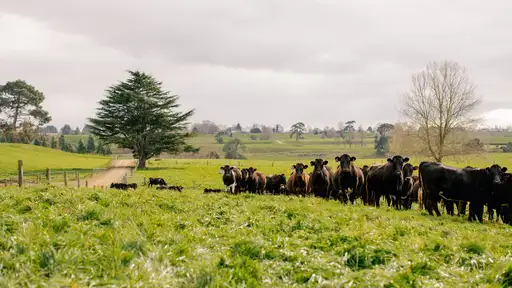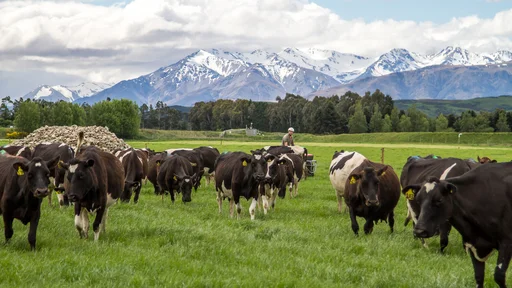2020 started with a wave of headlines claiming the dairy industry was in trouble, facing a decline in demand for dairy products in light of increasing climate considerations and the introduction of artificial proteins. More recently, driven by the impacts around the world of Covid-19, reliance on and pride in dairy has swelled with consumers appreciating our ability to deliver quality healthy milk products to consumers in New Zealand and other countries, providing valuable foreign exchange in these difficult times.
But like all sectors, particularly at the moment, the dairy industry needs to keep evolving to meet new challenges head-on and maximise new opportunities. That is why New Zealand’s farmers are sharpening their focus even more on improving cow productivity and efficiency, and why LIC’s innovation-led growth strategy - built off a global understanding of the factors driving change in global dairy markets, and here in New Zealand – is helping keep farmers ahead of the game.
We’re delivering on our strategy by providing leading genetic options and management tools to enable farmers to meet their environmental and animal care requirements – now and into the future. We’re also focused on making our data work harder to drive better insights to inform and evolve New Zealand’s dairy herds and products and ensure we remain the best in the world.
In today’s farming environment, being able to access the information you need, when you need it, is critical to productivity and profitability.
Information has been, and always will be, critical to what we do as an agritech co-op. The success of LIC, and ultimately that of our farmers, depends on us keeping our world-leading edge in pastoral dairy farming information, while broadening access to new data sets to meet future needs and challenges.
We have been working to transform our technology, modernise our systems and move all our data and systems to the cloud. This work is paying off, with big data and genomics allowing us to supercharge the rate of genetic gain and drive improvements in farm performance.
In 2019, we saw more farmers adopting LIC’s technology solutions to make their data work harder and get more insights to inform real-time decision making on farm. We also saw increased demand for our premium genetics products to get more value on-farm, including genomic bulls, A2A2 genetics, sexed semen, and short gestation genetics. This interest continues to grow.
As we look to the season ahead, the focus will be on delivering more for farmers through our cutting-edge genomics research, which will deliver increased genetic gain to the New Zealand dairy herd and help lift the bar even higher.
Genomics improving overall herd performance
So where do the next set of improvement opportunities lie?
Genomic selection is now a key part of our breeding scheme in conjunction with the more traditional methods of sire proving. As technology evolves, and our genomic dataset grows, so too does our selection intensity and accuracy, and this ultimately allows farmers to access elite genetics earlier.
LIC’s $70 million investment in genomics R&D has enabled recent enhancements in our genomic evaluation of animals and the selection system we use to predict an animal’s performance based on its DNA profile. The implementation of this genomic model, termed the Single Step Animal Model, further reinforces our ongoing commitment to pushing the technological boundaries to deliver genetic gain to our farmers, keeping them and New Zealand leading the global pastoral dairy system.
LIC has spent 12 months collaborating with New Zealand Animal Evaluation (NZAEL, a division of Dairy NZ), to ensure the enhancements our people have identified and developed can be leveraged for the wider industry. This resulted in NZAEL implementing our latest software into its animal evaluation in February this year. The overall benefit to farmers is improved accuracy in the prediction of an animal’s true genetic merit, enabling improvements in overall herd performance.
What will the decade ahead bring?
The NZ Dairy Statistics 2018-19 demonstrate we are heading in the right direction, with an increasing focus on data-driven agriculture as farmers seek more productive and efficient dairy cows, with a lighter environmental footprint. The results are good for our dairy industry’s profitability, competitiveness and reputation in global markets. It shows that our farmers are careful stewards of their herds, their products and are world leaders in precision farming to do more, with less.
LIC is working on a number of initiatives to help farmers keep step with increasing demands to reduce their environmental impact on farm and improve productivity in a sustainable way.
LIC has started a world-leading methane research project with industry partners, investigating the link between methane emissions from bulls and their genetics. The project brings together some of the leading scientific teams in New Zealand and hopes to ultimately provide Kiwi dairy farmers with the ability to breed more ‘climate-friendly cows’ that produce less methane.
This year, LIC’s Genetics Catalogue also has the addition of our new HoofPrint™ index, which enables farmers to select bulls based on their predicted ability to generate daughters with a lower environmental impact.
This work has the potential to deliver real benefits to farmers in the future by providing additional tools to reduce their farm’s emissions and consequently improve agriculture’s environmental footprint by enabling them to make more informed decisions about the environmental efficiency of the milk they produce.
It is vital that our sector continues to take full advantage of all the tools available to improve prosperity and productivity in a sustainable way so we continue to be the disruptors, not the disrupted. LIC has this intention at its core for our farmers and our country.
LIC Chief Executive Wayne McNee was also interviewed by the NZ Herald for an article (26 June 2020) on the agri-sector which can be read online or download and read the full Agribusiness report 2020.




